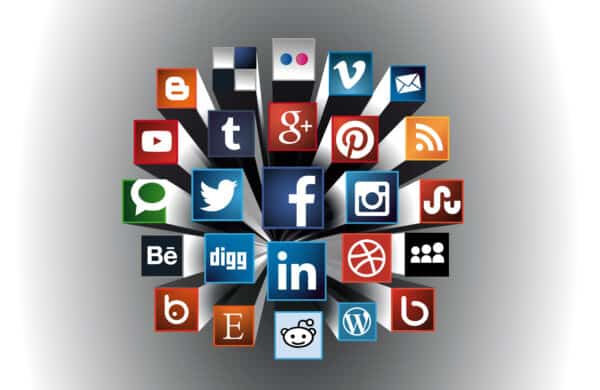1. The death of the “like” button on Instagram.
It’s no secret that brands (and even regular users) often fixate on “likes,” comments and followers on social media as a measure of popularity and brand recognition. But this obsession is having a negative impact on our mental health and can actually prevent the free flow of engagement.
Instagram is the latest in a long list of social media sites seeking to make likes less prominent. You will no longer be able to see the number of likes other Instagram posts get, although you can still see likes on your own posts.
The idea has been hailed as a way to “depressurize” Instagram and could also help combat fake likes and followers — these padded numbers can make brands and influencers appear to have a wider reach then they actually do. However, if likes do go away, marketers, brands and influencers will need to find ways to adapt to the fact they never had as many fans as they thought.
2. Less emphasis on “vanity metrics.”
Losing the “like” button on Instagram is part of a broader trend to de-emphasize the use of “vanity metrics” on social media. Twitter CEO Jack Dorsey has said that follower counts are now meaningless, and in a TED conference talk, he said if he could go back, he wouldn’t emphasize the “like” button so much.
For social media marketers and influencers, this should signal that it’s time to start digging deeper into actionable metrics — such as the rate and quality of user engagement on social media. Savvy marketers will take note, and begin exploring user demographics and relevant user data to better understand how to target potential customers.
3. Video story content is king.
Video continues to be one of the most important trends in the social media world. In fact, video will make up 82 per cent of all internet traffic in 2020, according to Social Media Today. As social media platforms look for ways to further prioritize video content, marketers will increasingly zero in on videos as part of their overall strategies to target specific markets.
Keep a close eye on how this format reshapes marketing strategies. There will be an emphasis on creative, engaging storytelling that captures user attention in seconds.
4. TikTok is disrupting social video.
The emphasis on video means that video-driven platforms such as TikTok, Lasso and Byte will continue to grow in popularity. Of these platforms, TikTok is the social media disruptor currently leading the way, especially with Gen Z users.
The Chinese-owned social video app is well-positioned to shape this trend as it offers fertile ground for influencers, including micro-influencers (another trend we’ll discuss).
TikTok is upping user engagement with its engaging, fresh and entertaining content that isn’t overly focused on a hard sell. In short, TikTok is the antithesis of your mother’s Instagram account because it shuns the overly curated and filtered view of life Instagram has become known for.
5. Social media audience segmentation.
Whether we’re marketing a product or branding the problem is, we don’t always have a firm grasp on who exactly is in our niche, nor do we do a good job of tailoring our message to target specific audiences. This one-size-fits-all approach is missing the boat on audience segmentation.
Segmentation means to strategically divide your audience into meaningful groups based on individual preferences. Segmentation goes beyond basic demographics by allowing you to target and build rapport and a sense of community with specific audience members. In the coming years, segmentation will be a defining line between the savviest social media strategies and those that are just winging it.
6. Personalized video marketing will become a thing.
Audience segmentation goes hand in hand with an increasing level of personalised social media marketing. It makes sense that combining segmentation with our love of video will result in personalised video marketing — think video content that is customisable and hyper-relevant to specific segments of your market.
Social media platforms, including Facebook, Instagram and Snapchat, are already pushing brands to produce video content through Story Ads, in part because these ad campaigns often see higher click-through rates than traditional News Feed ads. Twitter is also jumping into the fray with six-second video ads. Personalized content will take this trend to the next level.
7. Less public, more private interactions.
As our social media “friend” lists become more unwieldy, and concerns about information privacy grow, more users are turning to private groups and messaging apps to connect with others. Messaging apps like Facebook Messenger, WhatsApp and Instagram Messaging allow us to create more intimate groups where we can feel secure in sharing intimate and detailed information with others.
This trend, which is really a return to direct communication, has the potential to be massive. In fact, messaging apps have outgrown social networks as the connective tools of choice for many users. The top messaging apps now combine for nearly 5 billion monthly active users. That’s more users than traditional social networks have worldwide.
8. Audiences want meaningful connections.
As people become more wary of posting in the public social media domain, and interactions migrate away from public view, marketing will also need to follow suit.
Brands must find ways to create more private, intimate connections with their audiences without becoming overly intrusive. This will likely come down to building brand communities, or groups where your brand message is relevant, but where you are also receptive to direct messaging. This is what we do at FanCircles. We help you build meaningful connections.
9. Authentic content key to social selling.
When it comes to wooing would-be shoppers to eCommerce social media stores, users are more sceptical than ever. They want to hear insights from real people before they pull out a credit card and close the sale. This is where user-generated content and employee-generated content are critical, with the key being that these must be genuine.
User-generated content (think customer reviews) provide some proof the product may be worthy of trying. Employee-generated content is a bit broader and can include videos, images or blog posts, which may allude to their company’s mission and values, and the overall benefits of the product or services. Employees are seen as trusted insiders and customers find those insights more believable than canned company posts or other generic forms of social media marketing.
10. Influencer marketing goes nano.
When it comes to influencer marketing, it’s time to look beyond the old adage “go big or go home.” For the biggest bang on social media, brands should consider the impact of micro-influencers. Again, followers numbers are not the game now.
While there will likely always be a market for big-name influencers, don’t underestimate the sway of micro-influencers, who have smaller, better-defined audiences. Influencers at this level offer a greater level of personalization and stronger audience engagement. Not only that, but users are more likely to follow an influencer they feel connected to than a faceless brand.
11. Social media is the place to grow trust.
Brands would do well to remember that social media isn’t just a platform for marketing and advertising; it’s truly the best place to nurture trust and build a relationship with their audience. Social media offers the ultimate opportunity for communicating brand value and engaging with potential customers on their level.
Doing this requires brands to find ways to have a free flow of dialogue and let their hair down. Showing your brand’s human side and increasing transparency will build confidence with audiences. Focus on fun, simple engagement, be responsive to customer communication, and find meaningful ways to show social responsibility and a deeper level of social interaction. Build a smart landing page for your bio link too. Don’t miss an opportunity. Doing this will help you stay ahead of the curve on everything else on social media.
12. Fan apps create connections
This is where we come in. We provide micro-communities for like-minded fans to communicate and for artists to feel connected. The future of communities is not on big social networks but within a gated community where fans feel save to talk about their favourite subject. Check out what we do at https://www.fancircles.com
Author: Kevin Brown
Kevin, the CEO of FanCircles, is a serial entrepreneur with extensive experience in both the tech and music industries. He has managed arena-level artists and founded Affiliate Window (Awin.com), which he successfully exited in 2012 after its acquisition by Axel Springer. Recognizing the needs of artists and labels to connect directly with fans, he embarked on the journey of establishing FanCircles.



